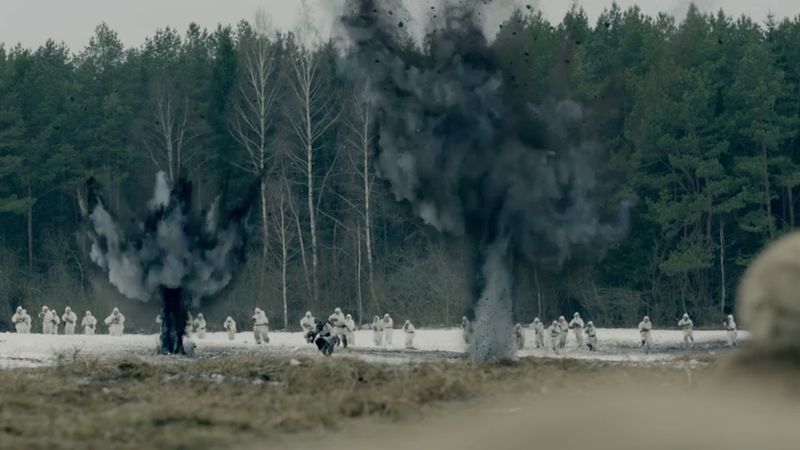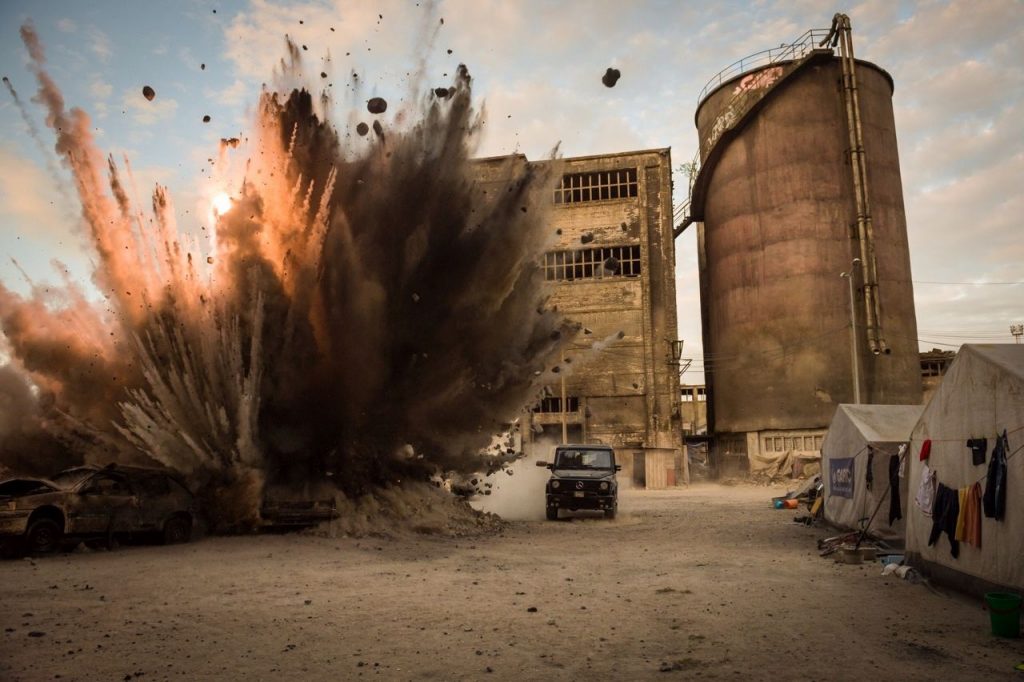Explosions • Blasting • Fireworks
Most people think SFX technicians do nothing else but to blow up things all day long. In reality, pyrotechnic effects make up only 10% of our work, but they are certainly among the most impressive ones we realize.
But not all explosions are done with pyrotechnics by us, sometimes we also use other techniques to simulate them, especially near actors. We have a wide range of bespoke equipment made in-house which allows us to do this.
Nothing beats the real thing, as a proverb says, and this is only too true when it comes to explosions, pyrotechnic effects and fireworks of any kind and size. Unfortunately, in all these areas, digital effects have been tried again and again for years — with usually poorer results and often higher costs in post-production. With our work we take care of the level of reality you want in front of the camera and with our decades of experience we ensure the success of the effect and the security of all parties involved. No matter what the scale.
The safe handling of pyrotechnics and explosives on set requires a high degree of professionalism and experience. Throughout our company’s entire history, we have been able to implement the wishes of directors and producers in hundreds of productions without any accidents.


BASICS
With every application of pyrotechnics on the set, we have to involve different authorities in the planning and need to obtain a permit, without which our work would otherwise be a criminal offence. In rare cases, however, this can also lead to the effect not being allowes at the desired time, location or size.
In any case, please calculate at least two weeks in advance for correspondence.
In case of larger effects, we also need a water source to be able to extinguish any fires that may occur. Our fire engines have built in tanks, but these are only sufficient for small fire-fighting operations. If there are no functioning fire hydrants, we have to install mobile water storage tanks on site and work with tanker trucks. Depending on the effect and further circumstances, a professional fire brigade will also have to remain at the site of the effect for several hours to prevent fires to reignite.
ON LOCATION
Of course, the owner or manager of a location must give his (written) consent; obtaining this is the responsibility of the production and without a permit we will not start work in any case!
Real explosions are rarely made in existing structures, unless they are ruins or buildings due to be demolished. We rather recreate parts of the original as so-called breakaways and assemble them on site or sometimes simulate explosions only. In buildings, it is necessary to pay attention to existing fire alarm systems!
Explosions are usually not a problem outdoors, but damage to the ground and vegetation must be taken into account.
IN THE STUDIO
Explosions in the studio or on stage are only carried out in small scale and are otherwise simulated. In principle, the approval of the administration, the responsible stage manager and the local fire brigade is required. The size of an effect in the studio also depends on the size of the building.
Also many restrictions may apply here. We will discuss the effect with the construction crew beforehand to avoid the use of unsuitable materials and statically unsuitable structures on the set.
ACTORS
Talk about planned effects with your actresses and actors beforehand, because not everyone manages such scenes without any problems. We will also discuss the effect with them in advance and, if necessary, we will carry out a training or tests; especially in scenes with larger crowds.
The costumes of actors and also props should also be adapted to the circumstances; We will be happy to advise the respective departments and, if required, also make non-combustible copies of items.
CREW & EQUIPMENT
The bigger and more dangerous an effect, the less personnel should be in the immediate vicinity — in case of an emergency, every unnecessary person on set represents a risk in case of evacuation.
The camera crew usually wants to be as close as possible to the action; exact risk assessment is necessary here. Shields and hearing protection can be used in some cases, but often the use of remote heads is better and safer. Sometimes however, only cameras in special housings can survive near the effect. We can offer you bespoke constructions in our workshop.
AFTERWARDS
The effect and the scene are wrapped. Now you can start cleaning up and repair calculated (!) damage. However before we do this, we’ll do an inspection to make sure that there are no remains of pyrotechnics left on the set.
In rare cases, also a check of the structural integrity needs to be done after the effect..